© Steve Cary, November 10, 2024
Our Grotesque Halloween Butterfly Feeding Gallery. Do you recall back in July when Tom Duval, the original instigator, sent us down this path of necrophagy in butterflies? Yes, that is the word for it; necrophagy. Necrophages are organisms that obtain nutrients by consuming decomposing dead animal biomass, such as the muscle and soft tissue of carcasses and corpses. See his photo below.
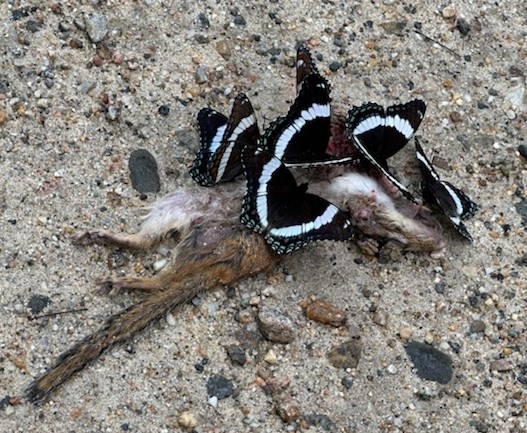
I accepted his macabre offering and shared my own disgusting photo below:
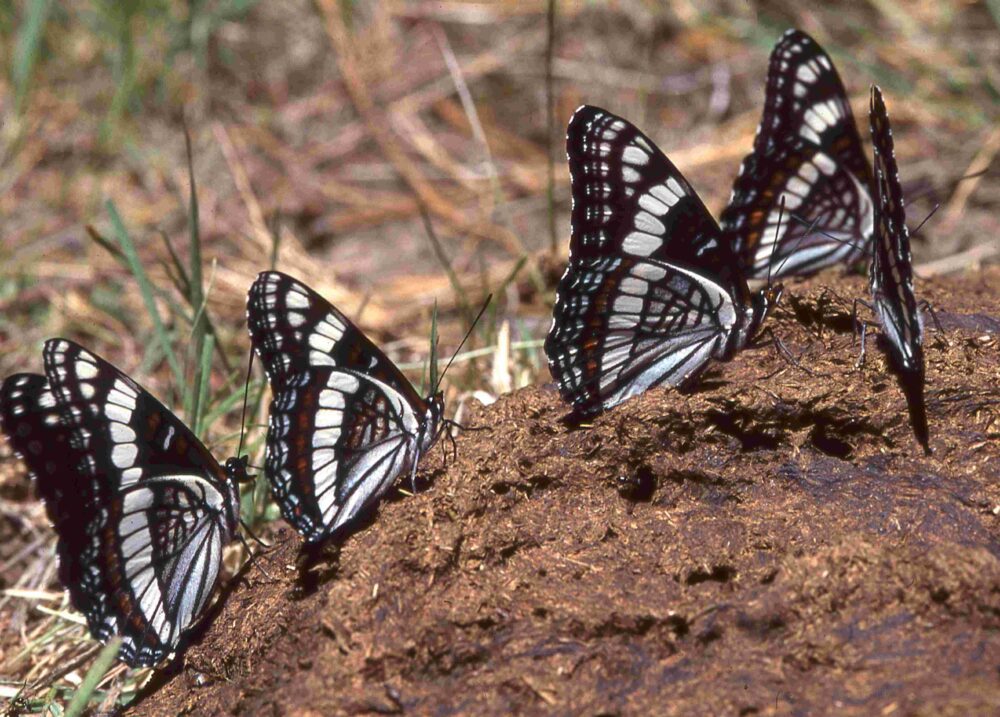
Then we invited you all to share your own photos featuring the macabre, grotesque or disgusting examples of butterfly feeding behavior. It’s not really a contest, though I may have used that word carelessly; there will be no winners announced. It’s more of gallery to make it plain that butterflies obtain nutrients from a variety of sources, and some of those sources are things we would not touch with a 10-foot pole. Greedy me, I had hoped for more entries, but the ones we received are excellent and underscore the point.
First some scat feeders:
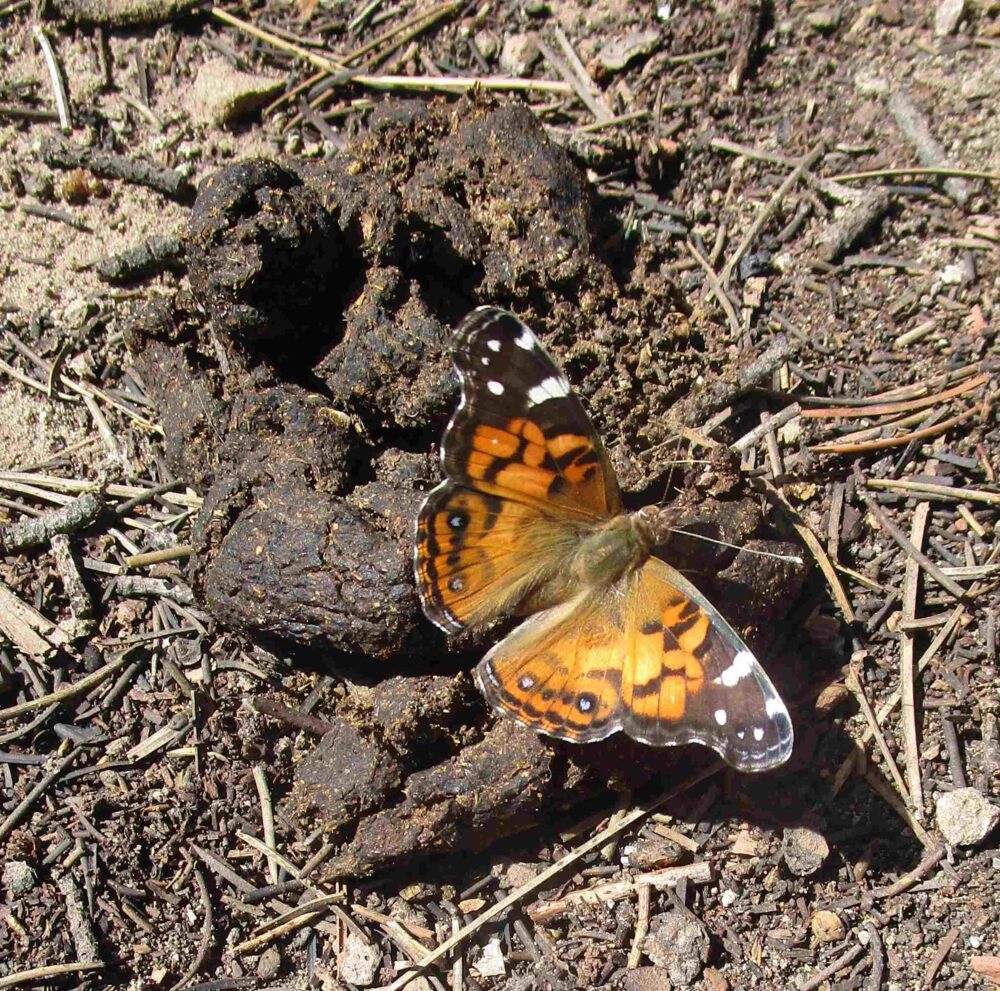

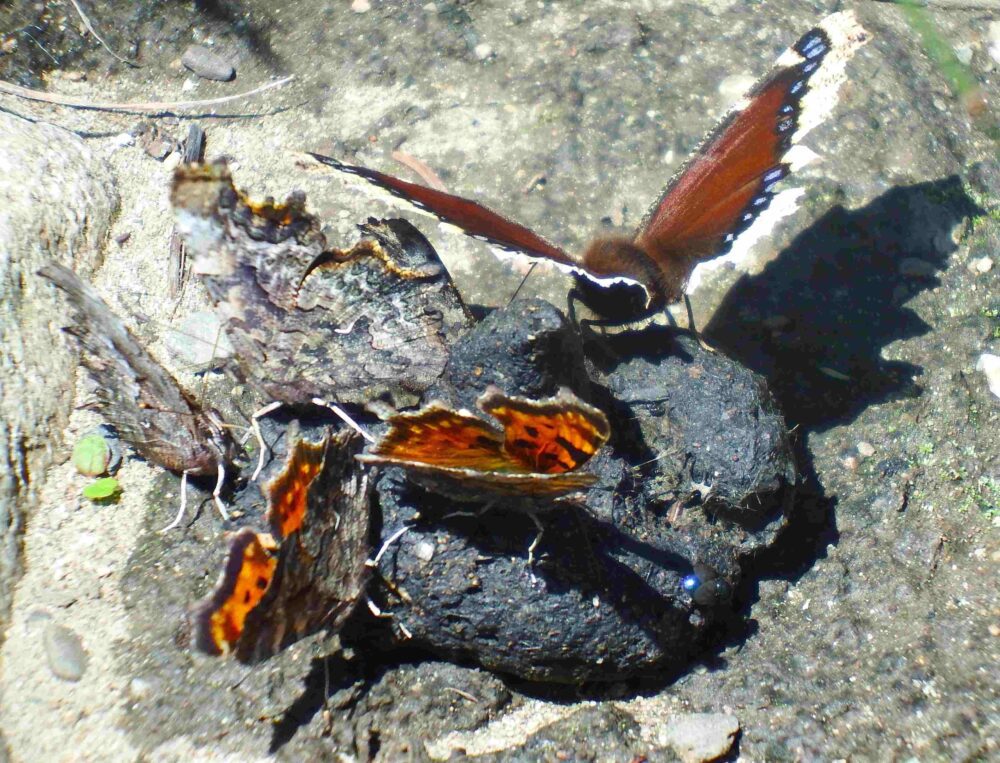
Now the corpse feeders:
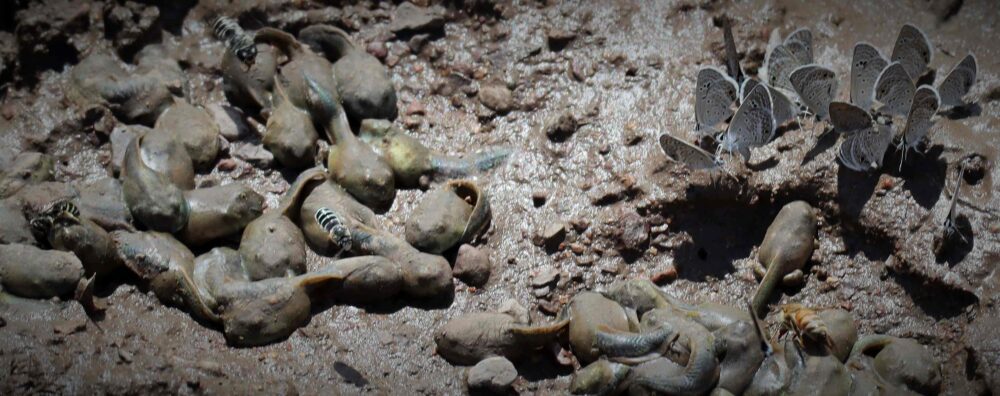
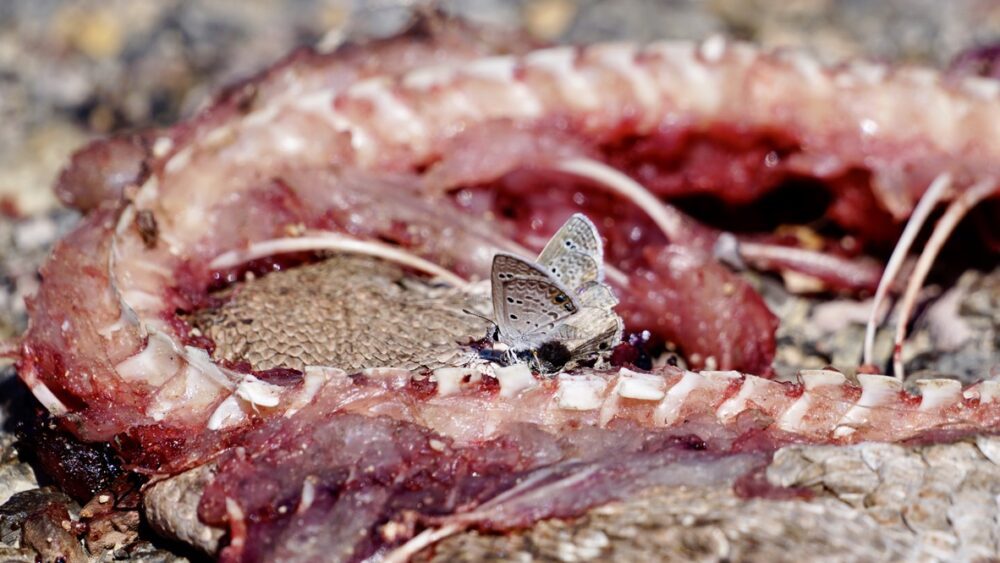
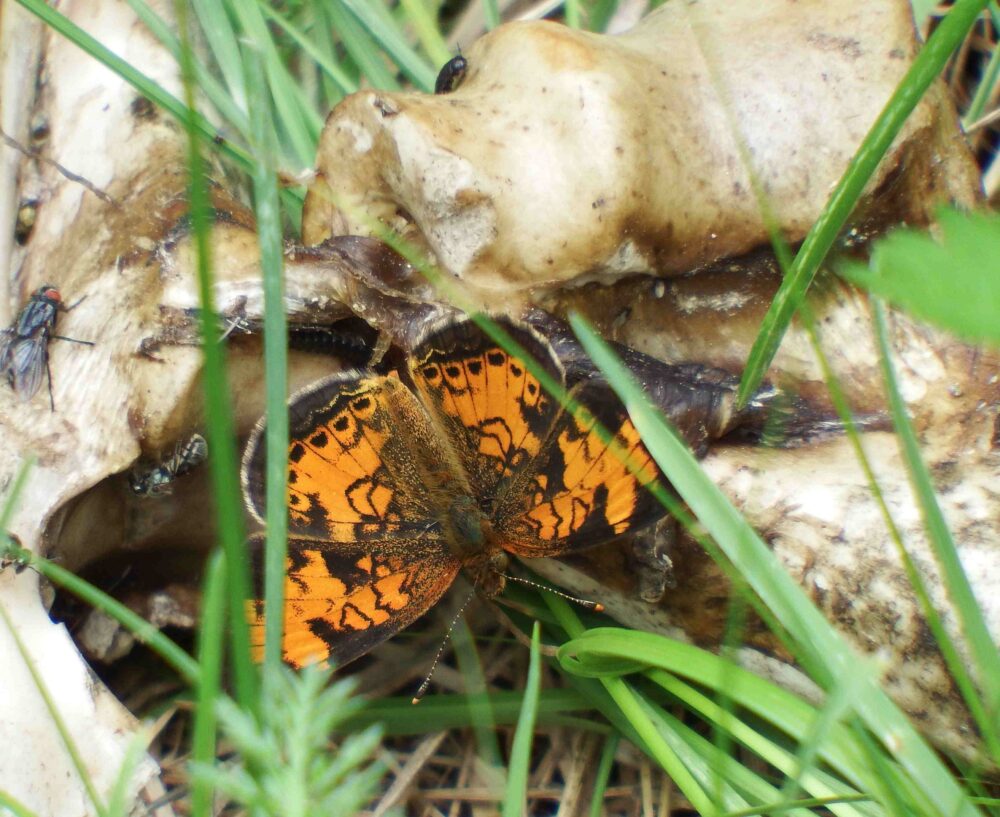
The evident variety of butterflies, food sources and locations underscores that these behaviors are widespread and routine, though perhaps not encountered every day. From an ecological perspective, butterflies are popularly seen as important pollinators and important prey items for arthropod, bird and reptile predators. It turns out they also serve on Nature’s decomposition and recycling teams and thus are even more integral and valuable than we thought!
Thanks to all who contributed images to this humorously nose-wrinkling story!
The phenomenon of necrophagy was put to use last month in Peru’s Cosnipata Valley, where Mike M. and Steve K. used baited traps to obtain hairstreaks. The purpose of the overall project, now ongoing for 17 years, is to enumerate all the butterfly species in the valleyhe. In the Amazon Basin, most hairstreaks spend a lot of time high in the forest canopy where they are difficult to see, capture, photograph or identify. Traps are 2-foot tall mesh cylinders with a mesh roof and a “floor” of stiff, light board on which was placed a dish of rotting fish. Once baited, traps are hoisted as high as practical, suspended just beneath the leafy tree canopy. I swear Mike and Steve each set one or two traps as high as 50 feet off the ground.
The fish puts off a very strong odor, unpleasant to humans but attractive to hairstreaks, who (by design, intuition or experience) probably associate the smell with electrolytes, which are a precious resource, particularly for males in the courtship arena. When ‘streaks’ detect the rank odor in their neighborhood they fly over to investigate, usually landing on the mesh of the trap. Bathed in the delicious aroma, they hang out there for a while. Prudent trap managers lower their traps frequently to check for hairstreaks. To date, over the course of 20 trips, more than 300 different hairstreak species have been documented in the study area. So, the method works. Ironically, the streaks themselves may never get to the bait itself, but other butterflies do, like the Isidora Leafwing in the photo below.

Now here’s a tasty question for you: are humans necrophages, too?
That’s all for now. I’ll pass along more stories as they come together. I hope your November is filled with butterflies or with plenty of moisture to support future butterflies.

I missed my chance! I have a movie of a Lorquin’s Admiral excited to find some dog poop. I saved a frame from that movie just now.
Wonderful photos and very interesting story. I’d been hoping to submit my own disgusting photo, but the butterflies I encountered before the deadline all happened to be more discerning diners I guess.
Very cool and ghoulish! Thanks Steve, you rock.
Yuck!
Interesting !
A truly horrendous smorgasbord of butterfly delicacies!
Hope you don’t get a lot of crap for highlighting this interesting subject, Steve! Last July in the Chiricahua Mountain (SEAZ), I was surprised to see a male Taxiles Skipper imbibing nutrients from a splotch of bird poop on a low leaf (I think he tanked in his own water to moisten the stain). Somehow, I thought only the ant-swarm bird-followers in the Tropics did this, which can be approximated by applying saliva-moistened bits of toilet paper on foliage. Maybe that would work occasionally up here, too!
https://flic.kr/p/2q3t47a (I hope it’s okay to link to a Flickr photo)
Kudos to these winged beauties for recycling waste into wonder!